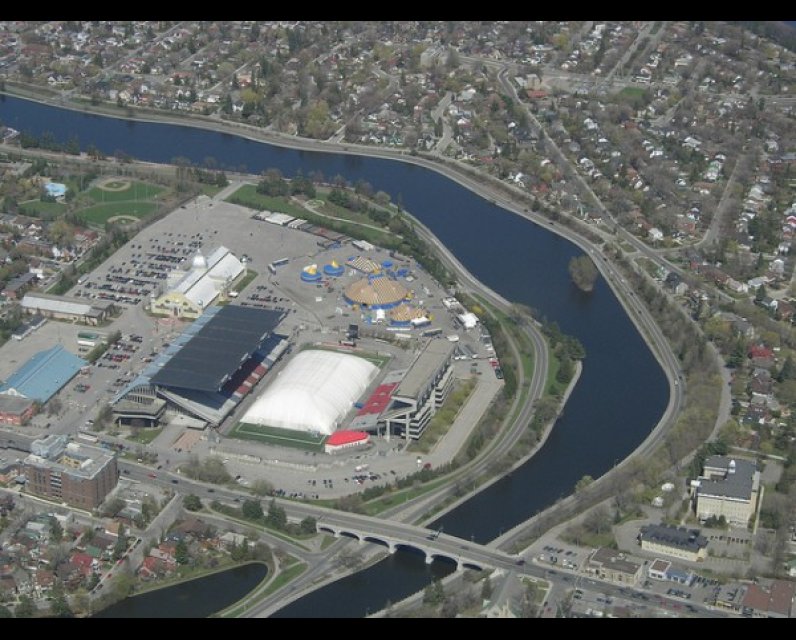Unpublished Opinions
I am a senior partner with the international consulting firm, William M. Mercer Ltd., a foreign service officer, a journalist and a public servant. I founded the Institute On Governance and I am the author of a best-selling book on public management. I have also been an adjunct professor at Carleton University and a visiting scholar at Massey College, University of Toronto.
I specialize in strategy, governance, organizational analysis, change management, citizen engagement, performance assessment and international relations.
How to really consult the people

This OpEd originally appeared in the Ottawa Citizen in the fall of 2009 during the consultation process for Lansdowne Live. One of the websites I refer to as an example of citizen frustration is the original edition of Letsgetitright.ca, a creation of James O'Grady's and the predecessor to UnpublishedOttawa.com. Unfortunately, the City of Ottawa is still using the same tired old approach to public consultation today as it was in 2009, to the detriment of its citizens. I hope you will agree with me that in the 21st Century, we should be using 21st century approaches to citizen engagement, public consultation and governance in order to provide transparency and ensure accountability.
Of all the issues at play in our town today, one of the biggest is the proposed redevelopment of Lansdowne Park.
But the proposal being circulated to citizens – a plan costing hundreds of millions of dollars – has become shrouded in an atmosphere of disquiet and suspicion. Green-shirted citizens patrolling the entrance to the six events billed as “citizen consultations” distributed “Myth and Fact Sheets” disputing various claims of the proponents. Web sites opposing the plan, such as www.friendsoflansdownepark.ca or www.letsgetitright.ca, sprang up. A march on the Park on October 14 is being organized to rally opponents.
Why?
These consultations were not trivial events. Much planning must have gone into them. Hundreds of Ottawans attended. City staff and representatives of the Ottawa Sports & Entertainment Group (OSEG) – the consortium of developers and business people behind the proposal – were out in force. Charts, consultants and glossy plans abounded.
Denis Abbott, the city’s Director of Communications and Customer Service proudly asserted at the October 5 meeting, “This is the most successful public consultation the city has ever run.” Asked if there were opportunities for dialogue, he pointed to citizens peering at charts and talking to staff, and stated, “There is dialogue everywhere here. If people thought the process was flawed, they would stay away.”
The OSEG project is certainly big league stuff. Revitalized sports facilities, renewed sports activities, thousands of square feet of new retail space, a hotel, green space, sustainability – all this and more is on offer.
So why the unease?
A key reason is that these “successful” consultations are actually deeply flawed.
Compare Ottawa’s program to a 2002 consultation in Manhattan. New Yorkers were invited to a “modern town hall meeting” to deliberate on the future of the great pit marking the footprint of the twin towers shattered by terrorists on September 11, 2001.
The contrast with Ottawa is stark.
In Manhattan, careful planning ensured that a cross-section of city inhabitants – including illegal immigrants, and poor as well as well-to-do New Yorkers – were brought together. Participants, 4,500 of them, were assembled not for a couple of hours but a full day. Instead of milling about in a large hall displaying promotional materials, they were invited to sit at mixed tables each accommodating 10-12 individuals. Informed by simple language documents, and guided by facilitators, participants were invited to deliberate – not just voice queries – and work through several carefully considered questions. These sought views first on broad questions of values and priorities, and later on six alternate development proposals for the site.
Scribes took notes on linked computers such that summaries of trends in all discussions could be followed on large screens at the hall’s centre. Periodically participants voted electronically on key questions. Results appeared at once on the screens for all to see, so citizens could see what their colleagues were thinking as they moved forward in their own deliberations.
Despite the electric emotions coursing through the hall – some participants had had family killed in the attacks – discussions were orderly and cordial. It was a remarkable, most moving event. No facilitator found it necessary, as did the one at the Tom Brown Arena, to remind participants, “No abusive language is permitted here.”
In light of this example, it seems extraordinary that the events organized by the city and OSEG were touted as “consultations”. A facilitator at one event stated firmly, “This is an information session: the intent is to pass along information and nothing else.” He hit the nail on the head.
The old-style approach used for Lansdowne – “experts” at the front of the room, one microphone, an unstructured, superficial question-and-answer session, complemented by suggestion boxes and some public polling – is what one might have expected thirty years ago. In the 21st century, Ottawa, Canada's capital, deserves better.
A contemporary approach to citizen engagement would reflect many elements of the Manhattan methodology without necessarily requiring the sophisticated technology deployed there.
Ottawa’s City Council has brought this atmosphere of disquiet upon us. Their decision to abort the Lansdowne design competition, to pursue one sole-source option and to endorse the current lame approach to consultation is reminiscent of their clumsy handling of the city’s mass transit challenges. This kind of approach lacks transparency, stifles debate and discussion of trade-offs or alternatives. It breeds suspicion of favoritism and backroom deals.
No wonder citizens are uneasy.
Maybe the OSEG proposal has merit. Maybe it doesn't.
With the “consultations” now being run, we’ll never really know what citizens collectively think. Nor will we benefit from the thoughtful ideas they might have framed had there been opportunities for informed dialogue designed to shape a future for Lansdowne truly reflective of the public interest.
**********************************
Tim Plumptre, founder of the Institute On Governance, has chaired several non-profit boards in Ottawa and has written extensively on governance issues. He can be reached at tim@timplumptre.com.



Comments
Be the first to comment